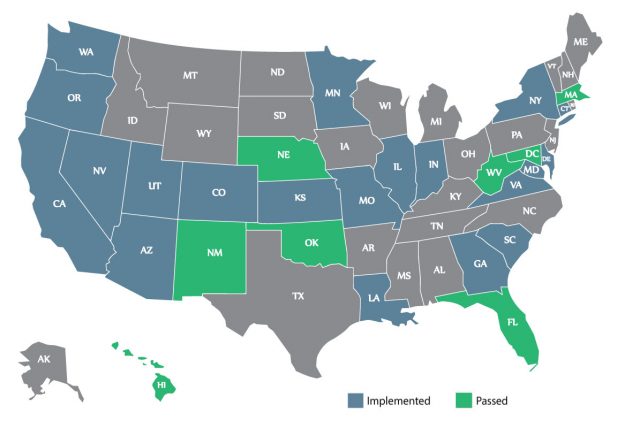Online Voter Registration: The Next Wave of Election Modernization
As election administrators look for new ways to cut costs and improve the voter’s experience, one area is producing quick results: the switch to online voter registration (VR). As of August 6, 2015— 22 states offer online registration, with another five plus the District of Columbia passing legislation to create online VR systems to be implemented at a later time.
Tradition vs. Technology
Traditionally the voter registration process begins when a new voter fills out a paper form and submits it to election officials. The officials then confirm the registration is valid and enters the information into the registration system. The National Voter Registration Act of 1993 broadened the availability of these forms, requiring states to offer voter registration at the Department of Motor Vehicles (DMV), disability centers, public schools and public libraries.
Online VR follows the same path, except voters fill out a form via their state’s secure VR site instead of a paper version. The electronic registration is then electronically submitted to election officials. Validation of each registration is done by comparing the provided information against DMV records. If information doesn’t match, the application is forwarded for further review and action. This method helps voter rolls stay up-to-date and more accurate. In an NPR article, David Becker, Director of Election Initiatives for The Pew Charitable Trusts remarked,
“If someone puts in ‘First Avenue,’ instead of ‘First Street,’ as their address by mistake, and it doesn’t match the motor vehicles file, in real time — with the voter still sitting at the screen — they can ask the voter to double check if what they entered was correct,” Becker explained, adding that this can avoid a lot of problems on Election Day, especially if the error involves the spelling of the voter’s name.”
Cost Savings
In addition to more accurate VR data, states are finding great cost savings with online models. In the 2010 Online Voter Registration: Case Studies in Arizona and Washington report, Arizona experienced a reduction in costs from 83 cents per paper registration compared to three cents per online registration. Again David Becker explains,
“What election officials are finding, is they’re saving a ton of money, because they’re having to process a lot fewer pieces of paper by hand, right before an election, and get that into the system.”
Concerns over security
Different approaches are used to ensure system security and to prevent fraud or breaches, a concern many officials share although no hacks have been discovered to date.
- Registrant provides his or her driver’s license number or the last four digits of a Social Security number, information that others wouldn’t have access to
- Systems can include “captcha” boxes, where registrants decode images or text, verifying they are not a computer bot, to prevent hacking
- All data is encrypted and data logs disclose unusual activity to be investigated
- Multi-screen systems where each question appears on a different screen, makes hacking more challenging
Despite concerns over security and data it seems voters, election officials and political parties are slowly seeing the benefits online voter registration offers. Voters get a streamlined and convenient way to register to vote while jurisdictions benefit from cost savings.
States with Online Registration

For additional information view the November 12, 2013 webinar Online Voter Registration: The Bipartisan Trend in Elections or read Online Voter Registration: Trends in Development and Implementation, released May 2015 by The Pew Charitable Trusts.
Data and quotes sourced from The National Conference of State Legislatures, The Pew Charitable Trusts and NPR.